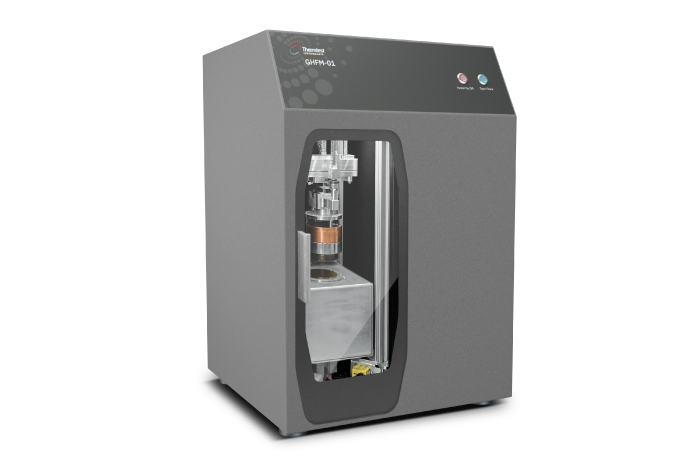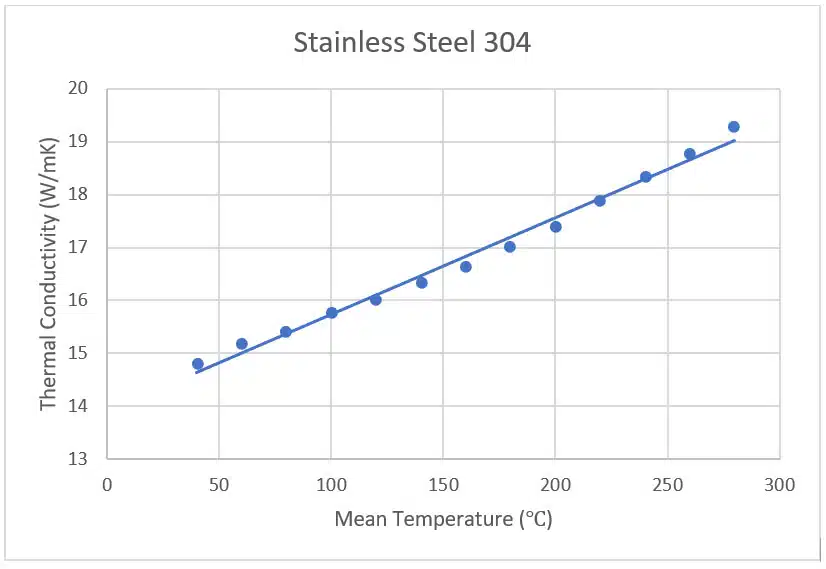The advanced Guarded Heat Flow Meter (GHFM-01) is a primary measurement of thermal resistance and thermal conductivity for solids, such as metals, polymers, composites, and paste. Specifically, the calculation of thermal conductivity from the measurement of thermal resistance is the most accurate method of testing the true thermal conductivity of heterogeneous materials. The steady-state measurement of thermal resistance represents the full sample thickness and mature heat transfer properties.

Picture 1. Thermtest Guarded Heat Flow Meter (GHFM-01).
The GHFM-01 follows ASTM E1530-19 for testing the thermal resistance and thermal conductivity of solids from 20°C to 300°C. The Thermtest proprietary test stack replaces the traditional pneumatic movement with advanced motor control, which allows automated control of testing sample thickness, force, or pressure applied.
The experimental result showed a decreasing trend in the thermal conductivity of stainless steel with increasing temperature.
| Mean Temperature (°C) |
Known Thermal Conductivity (W/m·K) |
Measured Thermal Conductivity (W/m·K) |
% Error |
| 40 | 15.06 | 14.81 | 1.69 |
| 60 | 15.38 | 15.17 | 1.36 |
| 80 | 15.70 | 15.41 | 1.85 |
| 100 | 16.01 | 15.75 | 1.66 |
| 120 | 16.33 | 16.03 | 1.83 |
| 140 | 16.64 | 16.35 | 1.77 |
| 160 | 16.96 | 16.64 | 1.89 |
| 180 | 17.27 | 17.00 | 1.59 |
| 200 | 17.59 | 17.40 | 1.07 |
| 220 | 17.91 | 17.87 | 0.20 |
| 240 | 18.22 | 18.34 | 0.66 |
| 260 | 18.54 | 18.78 | 1.33 |
| 280 | 18.85 | 19.30 | 2.35 |
